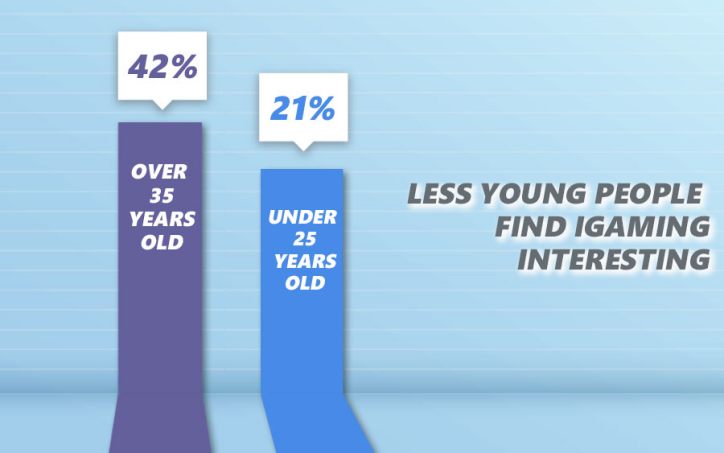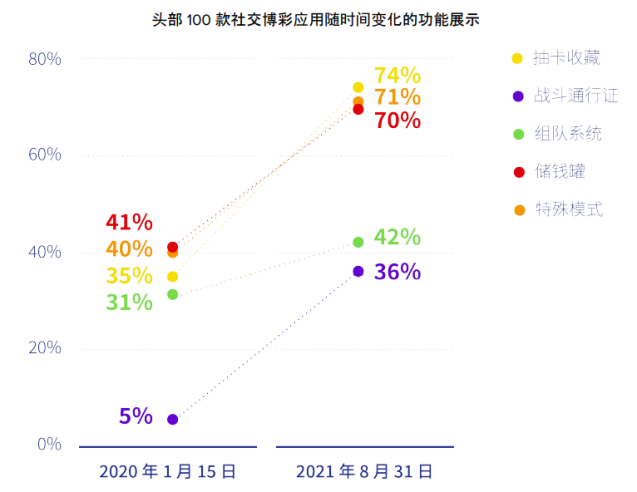According to data recorded by the market research company Statista in 2020, the results were completely unexpected. In the iGaming industry, an obscure niche suddenly stood out—the global gaming gross revenue (GGR) in the social gambling sector reached $6.2 billion.
Statista predicts that by 2026, just the social gambling gaming market alone will reach a revenue scale of $7.5 billion.
It is important to note that there are not many iGaming companies involved in this field, with only a few leading companies such as Zynga, Playtika, and Aristocrat Leisure. The market space is still very broad, representing a pure blue ocean competition.
Today, PASA will take everyone deeper into this industry to see the attractive aspects of this field! We hope to prepare everyone to get a share of the pie.
Millennials' Changing Preferences, iGaming Industry Innovation is Inevitable
According to a report by the Lloyd D. Levenson Institute of Gaming, Hospitality & Tourism (LIGHT) at Stockton University, as times change, gamblers accustomed to more traditional forms of online gambling are now gradually being replaced by a new wave of gamblers.
These individuals were born in the early 1990s to mid-2000s, aged around 20-35 years old—what we refer to as Millennials today.
The report indicates that this group of Millennials is showing less interest in iGaming, and as they become dominant in the market, it is leading to a reduction in traditional iGaming activities.
LIGHT's Executive Director Rummy Pandit stated: "The entertainment preferences of this key demographic group are of significant importance to the gambling industry and the future economy of the industry. This study focuses on the current preferences and behaviors of Millennials and attempts to understand how this will change with technological advancements."
Jane Bokunewicz, Assistant Professor at the Lloyd D. Levenson Institute of Gaming, Hospitality & Tourism at Stockton University, surveyed over 500 Millennials and non-Millennials from 22 states in the USA.
Bokunewicz pointed out that Millennials are most interested in casual dining and nightlife, with over 30% of Millennials stating that public transportation is important to them, compared to only 7% of non-Millennials.
Among them, 57% of Millennials play multiplayer table games such as blackjack, roulette, and Texas Hold'em, 44% play slot machines, with most preferring to play video slots with family or friends, while older players tend to play alone.
The study shows that compared to older generations, Millennials' interest in online games is decreasing.
The study reveals that for nearly three-quarters of the population under 25 years old, online gaming is not an important activity—only 21% of respondents indicated that online gaming is important to them, while this percentage is 42% among those aged 35 and older.
From this research report, we can conclude that Millennials are becoming increasingly disinterested in traditional iGaming games.
From the data that Millennials are more keen on gathering and engaging in multiplayer interactions, we can also draw a conclusion—the loss of interest in iGaming stems from these traditional games lacking social interaction and recognition.
Until now, iGaming has typically been a solo activity. Even in games where players battle each other, or when multiple players are at the same table, there is a lack of feedback and direct interaction among players.
This leaves players with a sense of loneliness, feeling as if they are only playing the game alone or battling against robots.
Compared to modern video games (especially mobile games), players can not only play together or against each other, but also communicate and interact in various ways, such as chatting, using emojis or voice, and other instant gratification methods, making players more immersed in the game.
In iGaming games, we are precisely lacking this type of game.
In recent years, not only is gambling being gamified, but the phenomenon of introducing gambling elements into mainstream video games is also becoming increasingly common.
These games are often advertised as "free" in app stores, thereby quickly attracting a large number of players. Once players invest some time in the game, they find themselves in a situation where the core gameplay is deliberately made more difficult, encouraging players to spend money on "loot boxes."
These "loot boxes" contain chances to obtain in-game items randomly, such as skins, equipment, cards, or anything attractive within the game.
This randomness is actually similar to gambling in its appeal to people. Paired with social attributes, players can communicate with each other in the game, and even compare with each other, perfectly encompassing the preferences of the Millennials we are discussing.
Therefore, being able to incorporate all the features of mainstream games into iGaming games—designing gambling social games—becomes the biggest premise for attracting Millennial users.
To Attract Millennials, Know Where to Start!
The preferences and tendencies of Millennials are completely different from the previous generation, and our industry must find ways to adapt and attract this new group.
What can we do? How can we attract Millennials to participate in iGaming?
We already know that Millennials are more interested in social games, so adding social elements to traditional gambling iGaming is our primary goal.
Moreover, as traditional gambling companies are targeting this rapidly growing market segment, the market landscape will experience greater fluctuations and competition.
Fortunately, design and marketing are not a game of luck. As practitioners, we must grasp the importance of being early movers and differentiation.
One, Mobile-First Design
The breadth of mobile browsing has surpassed desktop browsing. Not just Millennials, more and more people are choosing to browse the internet and consume media anytime, anywhere. For game developers, a mobile-first approach should be adopted for web and game development.
Develop primarily for mobile platforms while ensuring compatibility with desktop platforms.
This difference may seem subtle, but its impact can be profound.
By focusing on mobile first, the user experience on mobile platforms is optimized, making it more attractive to the new generation of Millennials who use mobile platforms more than desktop platforms.
Two, Game Socialization Design
As emphasized earlier, Millennials crave social interaction and feedback when participating in online games.
What we need to do now is to base traditional gambling games and inject social elements into the player experience. This means allowing players to use emojis, chat, and challenge each other, and encouraging their use.
We can make the player experience more social, allowing players to easily share their achievements with friends—whether on social media or directly through screenshots. There are many ways to give players something worth sharing—this can be achieved through gamification.
In gamification, in addition to satisfying socialization, it also addresses the issue of users gaining a sense of recognition.
The most basic form is the leveling system, where players simply play the game to gain experience points—once they accumulate a certain number of experience points, they can level up. Achievements can also be implemented, such as rewarding players with special badges or trophies when they reach certain game events.
Furthermore, we can implement tournaments or seasonal leaderboards to encourage players to participate more in the game, as they may find themselves chasing the next level or competing to top the leaderboard.
And if we need to create a new iGaming game, we also need to achieve comprehensive socialization design.
According to data from the marketing platform ROAS from 2020-2021, we identified five significant characteristics of social gambling app players. A game that includes these five mechanisms essentially encompasses the top revenue of the entire social gambling game market.
1. "Album Collectibles," also the most popular (appearing in 74% of top apps) and fastest-growing (increased by 39%) of these five features.
Through drawing cards and collecting, users can obtain additional rewards by completing collections, while also gaining bragging rights from discovering rare items. They do not affect the core game experience but are a way to increase the sense of achievement and recognition during the game process.
2. "Special Side-Modes," also mentioned earlier in mainstream games, some purchasable or unlockable "special loot" rewards can bring additional content to the game.
Typically, "Special Side-Modes" are linked to the core game cycle through currency or resources. In our gambling games, these currencies or resources can be obtained through actions such as betting, and then players use these resources to advance the "Special Side-Modes."
3. "Piggy Bank" system, an effective monetization tool. Users fill the piggy bank by playing the game. Once the piggy bank is full, they can buy the contents at a low price with real money.
4. "Guild Mechanics," the presence of teams is to increase social participation, giving players the opportunity to play together and chat with others.
Teams are the foundation of game social functions, further completing cooperative tasks, team competitions, etc. Currently, almost all social gambling game teams provide their users with the opportunity to seek help from each other and chat in a closed environment. This is the "minimum requirement" when introducing social functions into gambling games for the first time.
5. "Battle Pass," mainly to maintain the length of user gameplay, while giving players a sense of achievement in completing tasks.
The design of the "Battle Pass" and the appearance of "Album Collectibles" are similar: both provide opportunities to win additional rewards while playing the game.
Three, Influence-Based Marketing
Once the game product is well-designed, it's time for marketing to catch up. Whether you like it or not, influencer culture has always been highly influential for Millennials.
Because social media is the main source of news for Millennials, and in the past five to ten years, social media influencers have rapidly risen.
The so-called "influencers" already control a significant part of the discourse within their social domains. This provides an opportunity for iGaming industry marketers.
We must make good use of these influencers' influence to reach their audience, which is even more effective in targeted marketing to young people than traditional advertising, as these influencers can almost sway their young fans' opinions, thus our advertisements will receive a more positive response due to their status.
Conclusion
In summary, the integration of socialized game design and social media marketing strategies is key for iGaming companies to stand out in a competitive market.
As a generation of digital natives, Millennials have particularly strong needs for interactivity, community, and a sense of achievement.
By creating games with social functions and establishing deep connections with them on social media platforms, iGaming companies can not only attract this generation of players but also form a loyal user base through well-planned social activities and content marketing, promoting the brand's long-term development.
Millennials are not just players; they are the leaders in the future socialized world. By capturing them, iGaming companies not only win the market but also win the future.
We look forward to discussing more unique insights about gambling game socialization with our readers and sincerely invite you to follow the global get-rich industry outbound information platform PASA for more firsthand get-rich industry information.
Welcome to subscribe to the official PASA channel: https://t.me/PASAIGHYJL












